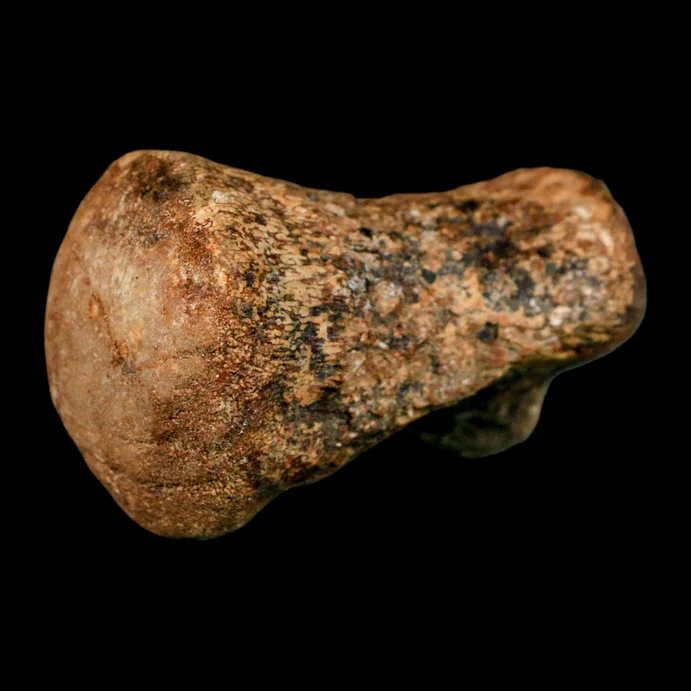In the world of paleontology and fossil collecting, few discoveries ignite as much fascination as Mosasaurus fossils. These ancient marine predators ruled the oceans nearly 70 million years ago, rivaling the ferocity of today’s great white sharks. With long, streamlined bodies and powerful jaws lined with sharp teeth, the Mosasaurus was one of the most formidable hunters of the Late Cretaceous seas.
As authentic Mosasaurus fossils become highly sought after among collectors and researchers, so too have replicas and composites flooded the fossil market. Knowing how to tell a genuine fossil from an artificial reconstruction is essential — not only to ensure authenticity but also to preserve scientific and historical integrity. Whether you’re a beginner collector or an experienced enthusiast, this guide will help you identify real Mosasaurus specimens, including valuable tips on evaluating Mosasaurus teeth and skeletal fragments.
1. Understanding the Origins of Mosasaurus Fossils
To spot an authentic Mosasaurus fossil, it helps to understand where they come from. The majority of verified Mosasaurus fossils are unearthed from the phosphate-rich formations of Morocco, particularly the Kem Kem Beds. These ancient marine deposits date back to the Late Cretaceous period — roughly 100 to 66 million years ago — when much of North Africa was covered by shallow seas teeming with marine life.
Fossil sites in Kansas (USA), the Netherlands, and Belgium have also yielded well-preserved specimens, though Moroccan deposits remain the primary source of fossils available in the collector market today.
Unfortunately, the abundance of fossils from Morocco has also led to an influx of replicas or heavily “restored” pieces. Some of these items combine genuine fragments with resin or stone fillers to create the illusion of completeness. For collectors, recognizing the geological origins and mineral characteristics of authentic fossils is the first step toward identifying the real thing.
2. Recognizing the Natural Features of Authentic Mosasaurus Fossils
Authentic Mosasaurus fossils display natural characteristics that develop over millions of years of fossilization. Here are some features to look for:
- Texture: Genuine fossils have a porous, grainy texture — the result of mineral replacement of bone material. Artificial replicas tend to feel smoother or waxy.
- Color: Natural fossils show variations of brown, beige, gray, and reddish hues, influenced by the minerals in the surrounding rock. If the color appears uniform or overly glossy, it may indicate resin coating or paint.
- Weight: Authentic fossils are denser and heavier than resin reproductions because of the minerals absorbed during fossilization.
- Fractures and wear: Slight cracks or mineral veins across the surface are typical of real fossils. Perfectly polished or symmetrical pieces are often cast replicas.
A genuine Mosasaurus fossil tells a story through its imperfections — each line, chip, and stain records eons of geological change.
3. The Telltale Signs of Authentic Mosasaurus Teeth
Among all marine reptile fossils, Mosasaurus teeth are among the most collected. These teeth, with their distinctive conical shape and sharp ridges, reveal much about the predator’s diet and hunting strategy.
To identify authentic Mosasaurus teeth:
- Enamel details: Genuine teeth have fine longitudinal ridges running from the base to the tip. These ridges are natural and irregular, unlike the smooth, machine-perfect finish of fakes.
- Color and patina: Authentic teeth often show natural mineral staining — typically dark brown, black, or tan — from the sediment they fossilized in. Replicas may appear too clean or uniformly colored.
- Root structure: Many authentic Mosasaurus teeth still show partial root fragments or matrix (sediment) attached. If the base looks too even or artificially filled, it may be a composite piece.
- Weight and density: Fossilized teeth are solid and heavy, while resin copies feel lighter in hand.
Collectors should be wary of teeth that appear “too perfect.” Mosasaurus teeth naturally vary in size and curvature, and even minor wear marks or chips add to their authenticity and character.
4. Composites, Restorations, and Reproductions — Knowing the Difference
Not every fossil that looks “fake” is necessarily fraudulent. Some Mosasaurus fossils undergo partial restoration — a process where missing areas are filled with resin or plaster to stabilize the specimen for display. This is common practice in museums and private collections, especially for fragile bones.
However, composites (fossils assembled from parts of multiple specimens) are less desirable for collectors seeking authenticity. These pieces may contain a mix of genuine and artificial materials. Always ask sellers about restoration details, as ethical dealers will disclose this information openly.
Replicas, on the other hand, are complete reproductions made for educational or decorative purposes. While they may look impressive, they hold no scientific or collectible value.
5. The Importance of Documentation and Provenance
Authenticity doesn’t end with the fossil itself — it extends to its documentation. Every legitimate Mosasaurus fossil should come with provenance records and a Certificate of Authenticity (COA) issued by a reputable dealer or institution.
Documentation should include:
- The fossil’s origin (e.g., Kem Kem Beds, Morocco)
- Geological age and formation
- Preparation details and any restoration work done
- Verification from a recognized paleontological authority
Avoid purchasing from sellers who cannot provide this information. Provenance is not just paperwork — it’s a record that safeguards both the fossil’s authenticity and its ethical sourcing.
6. Where to Find Verified Mosasaurus Fossils
The best way to ensure you’re acquiring genuine Mosasaurus fossils or Mosasaurus teeth is to purchase from trusted fossil dealers and established institutions that specialize in authentic specimens. Reputable sellers prioritize transparency, documentation, and quality preparation over quick sales.
Always review customer feedback, dealer experience, and scientific background before buying. Reputable fossil shops and museums often collaborate with paleontologists to ensure every specimen they offer is genuine and responsibly sourced.
Conclusion
Owning authentic Mosasaurus fossils is more than just collecting—it’s holding a tangible piece of Earth’s deep history. Each tooth, jaw, or vertebra represents a chapter in the story of one of the ocean’s greatest predators. By learning to identify the signs of authenticity — from texture and weight to provenance and geological context — collectors can confidently build fossil collections that are both scientifically meaningful and ethically sound.
For collectors seeking verified Mosasaurus fossils and genuine Mosasaurus teeth, Fossil Age Minerals offers an exclusive selection of ethically sourced specimens. Each piece is handpicked, authenticated, and curated to connect you directly with the prehistoric world beneath the waves.



